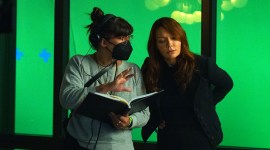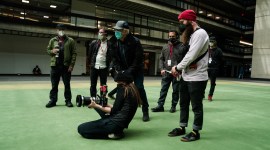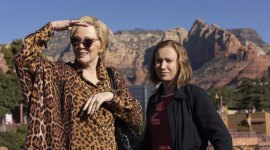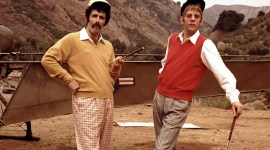
An Interview with Michael Pessah, ASC, on Filming a Beach Night Exterior
Cinematographer Michael Pessah discusses the lighting, camera, and overall planning it took to pull off shooting a beach night exterior.
Smiley Face Killers is a treatise in dark horror about a troubled college student whose life descends deeper into paranoia when he becomes the target of a mysterious serial killer.
Set in Santa Cruz, California, the beach landscape is an important part of the action. It’s the most iconic of southern Californian locations and much of what writer Bret Easton Ellis, director Tim Hunter, and cinematographer, Michael Pessah wanted to do in the film was to slowly turn a Cali daydream into its worst nightmare.
For a pivotal scene at the beach, the vision was to callback to classic California beach movies such as Point Break, or even Gidget, and then pull the rug out from under things. That meant accomplishing a hard, physical challenge—shooting a beach exterior at night.
Let’s hear what cinematographer Michael Pessah, ASC has to say about the overall planning it took to pull off shooting a beach night exterior.
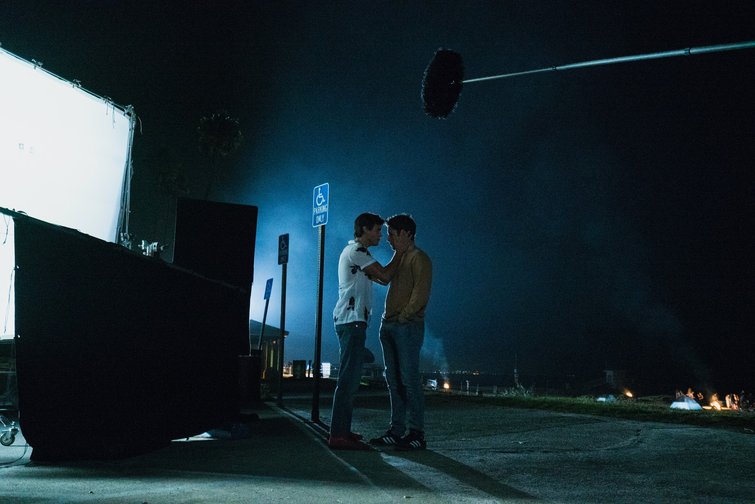
Lighting
Lighting the beach at night is one of the most difficult things to do in cinematography. That is why many films such as Jaws (Chrissie’s death), Cast Away (the dramatic rowing sequence), and Down Periscope (night ocean sequences with submarines) did their ocean scenes day-for-night.
There are many reasons for this. The water is very difficult to see at night—it’s big and dark. Getting gear and power to the beach isn’t easy. Plus, there aren’t many trees or structures to mask lights and equipment. So, how did Hunter and Pessah approach it?
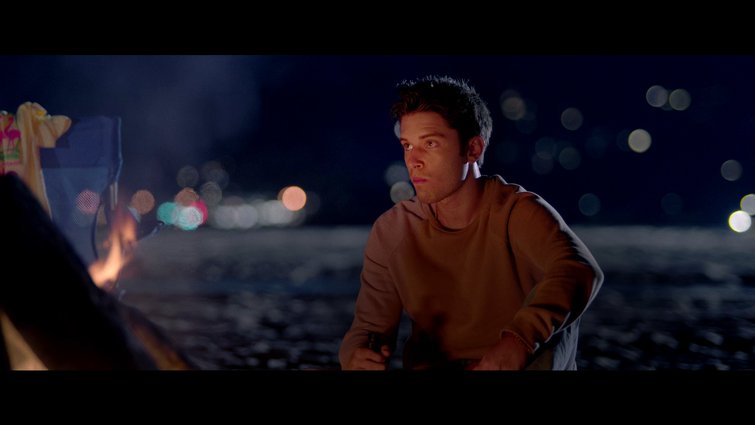
One of my solutions was to use a Beebee Nightlights truck on the beach. It allowed us to roll our lighting right onto the beach and set our moonlight without having to run a lot of power cables through the sand. We gelled the Beebee with 1/2 CTS so it wouldn’t read too blue against the fires. We really wanted to use real fires for the beach bonfires (it just looks better than when you fake it with a light), so our VFX department had adjustable spigots on the fires so we can set the intensity at different levels for wide-shots and closeups. I designed the lighting to work with the levels of the bonfires—it’s easier to adjust a light than to change how bright fire is so we could get a nice, rich orange. I exposed the fire at about two stops over key.
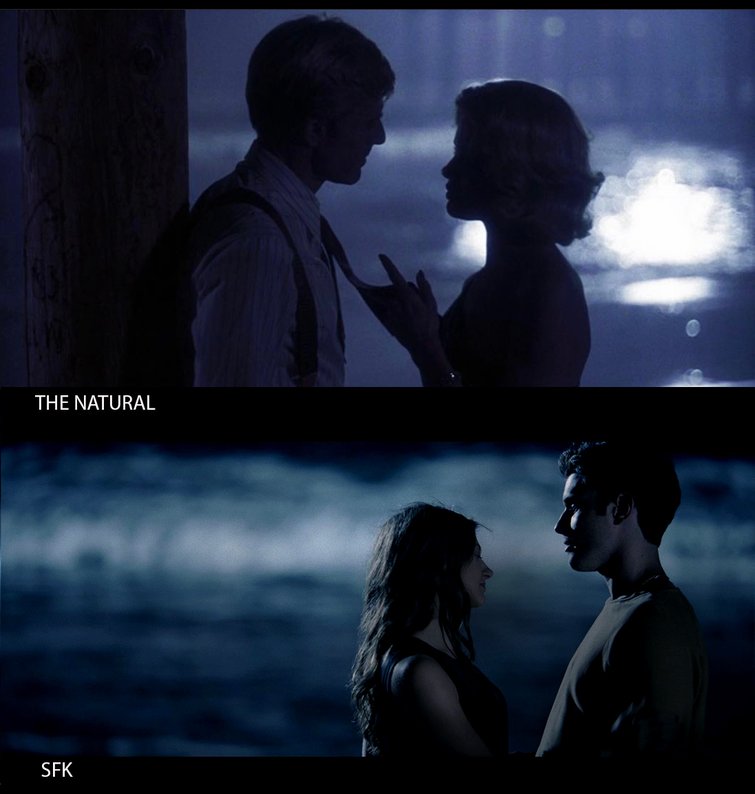
For the love scene at the beach, I homaged one of my favorite scenes, the beach love scene in The Natural, where Robert Redford plays in silhouette against the water. Caleb Deschanel, ASC, brilliantly backlights the water there, and I wanted to try something similar. It’s really quite magic when you see the waves play behind them.
On the pier, to give the water a backlight to silhouette our stars during their romantic walk, I placed small HMI’s with a 6500 putt-putt generator. It’s always great to have a small generator and a 2.5 or a 1.8 on hand for you to easily place in spots without having to run a lot of cable. This is also really helpful if you are filming in the forest and need to place a light in deep background.
Taking inspiration from the script, Pessah used important props to provide a natural light source.
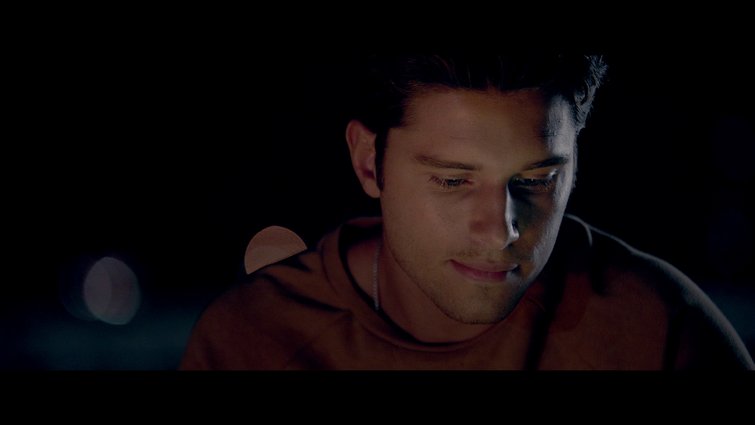
I wanted to have a light source beyond just moonlight and the ability to push the color wheel in opposite directions—the team came up with the idea of bonfires across the beach as a visual element. Cell phones play a big role in the film, and we just used them as actual light sources in the scene. It took some work to get the color and brightness right, but they worked really well with the fire and the backlight.
Camera and Overall Planning
Director Tim Hunter was especially interested in blocking the camera in three dimensions—utilizing depth within the frame and taking advantage of the large canvas Will Rodger beach provided. Pessah was thrilled with the approach but knew it would take planning and creativity to realize his vision.
After we did our first walkthrough with our AD, I knew that bringing in a Beebee truck would be the most efficient way to create our moonlight. It was a scene filmed over multiple nights, and we would have lost a lot of time running heavy cable through the sand, and then wrapping it every morning . . . only to repeat again a few hours later.
I explained this to production and they immediately agreed it was the way to go. The truck was able to just roll up and we had light very quickly, and it was very easy to position when the angles changed.
Also, on the scout, we saw where the sun came up in the morning. We made sure to not be pointing in that direction at the end of the night so we could have a few more minutes of shooting time. We also determined which direction would reveal the twinkling lights of Los Angeles in the background. We tried to block the scenes, so the most important close-ups were pointing that way.
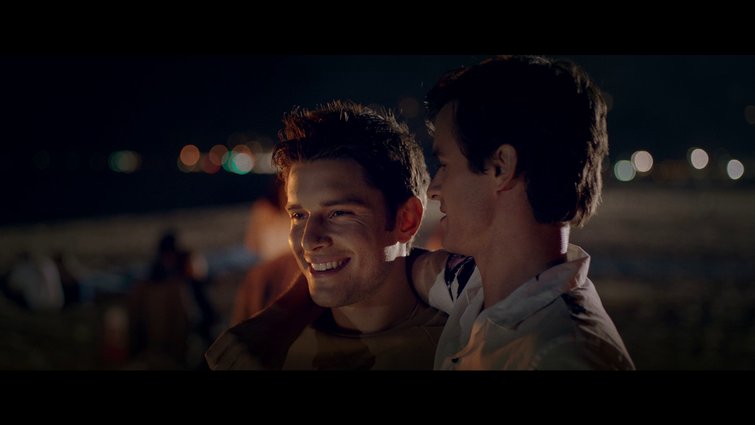
Pessah provided a wonderful point of view of his approach to planning lighting. Similar to when artists focus on negative space (the space around and between the subjects), he knew there were going to be fundamentals you can’t control, and you want to set your light levels around those elements. In this case, he lit to a level where the twinkling lights and the fires looked the best on the beach.
We only had one big lighting truck, so quite a few of the angles were cheated so that the actors would be in the backlight in both directions. They were long-lens shots and there’s not a lot of geography to give it away. Very helpful for filmmakers to remember that if you are on a long lens, often you just need to pan the camera over a little bit and it looks like you’ve completely flipped the axis 180 degrees. As long as you can keep track of your eyelines, it’s much faster than moving a huge backlight to the other side of the set.
Of course, if you have resources to keep two big sources on opposite sides of the night exterior, and toggle between the two when you spin your camera, it’s even better. But, we didn’t have the budget for that, and this solution worked great.
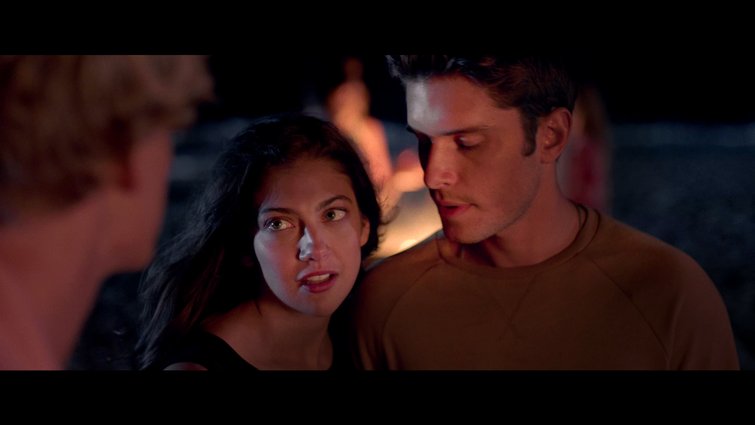
Part of planning on a budget is knowing where the edit will be and taking the time for the most useable takes.
At times we filmed our close-ups first and then pulled back for the wide shots. There’s a convention that you must always start with the wides, but often the scene lives in the close-ups and it’s nice to give them all the time they need, and then work your way backwards.
Another factor when shooting outdoors and close to water is how the physical elements will impact filming.
Steadicam on the beach can be tricky because of the wind. Our grips would often need to hold a 4×4 double net next to Twojay to keep the wind from affecting the composition. There’s a few steadicam shots on the beach that we pulled off with a 75mm lens, and they are rock solid.
With all the practical considerations, it still comes down to the story.
Overall, we planned the color arc of the scene to go from warm to cool to warm. It’s really great to shift hue throughout a camera move or over the course of a long scene. It helps accentuate movement and gives weight to the characters’ journey.
If this interview wet your whistle for more practical tips for filming on the beach, check out this informative Shutterstock tutorial on the best way to capture the sun and surf on film.
For additional cinematic tips, tricks, and interviews, check out these articles:
- Industry Insights: What Makes a Successful Cinematographer
- Cinematography Tips for Covering Your Master Shot
- Industry Insights: Cinematography the Emmanuel Lubezki Way
- Industry Insights: Bernie Su on His Emmy-Winning Series “Artificial”
- Interview: Director Ernie Gilbert on His Sci-Fi Short Film “Nine Minutes”
Cover image via Melanie Pullen.



